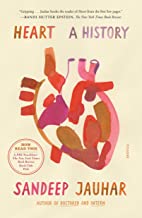Heart: A History by Dr. Sandeep Jauhar
What's It About?
Since 1910, cardiovascular disease has been the number one killer, claiming 18 million lives a year.Buy this Book!
Amazon


Jennifer Gans Blankfein is a freelance marketing consultant and book reviewer. She graduated from Lehigh University with a Psychology degree and has a background in advertising. Her experience includes event coordination and fundraising along with editing a weekly, local, small business newsletter. Jennifer loves to talk about books, is an avid reader, and currently writes a book blog, Book Nation by Jen. She lives in Connecticut with her husband, two sons and black lab.
 NonfictionRecommended
NonfictionRecommended
 NonfictionTrending
NonfictionTrending
 MiscellanyNonfictionPop CulturePopular
MiscellanyNonfictionPop CulturePopular
Get the latest on releases, authors and all things books right in your inbox!
© 2024 BookTrib.. All Rights Reserved. Privacy Policy | Terms Of Use | Accessibility Statement
This site is protected by reCAPTCHA and the Google Privacy Policy and Terms of Service apply.
Enter your information to download the chapter now.
